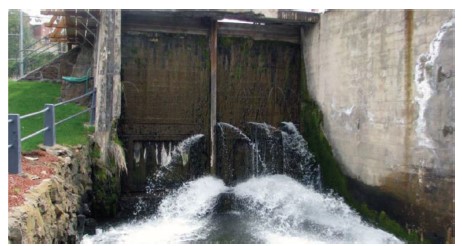The polyurethane is a polymeric material obtained from the reaction of an isocyanate and hydroxyl groups. What makes this material very valuable is its very fast reaction in seconds and the resistance that products shows in different pH values environments.

Figure 1. Reaction of polyurethane material with water and foam production.
Polyurethane due to its structure, provides good waterproofness, toughness, abrasion resistance, light resistance and chemical resistance. In polyurethane applications, the isocyanate and hydroxyl ratio also the catalyzer amount should be checked carefully.
In the case of polyol or isocyanate activness and in the case of crosslinking, the exact ratio setting will not be so necessary. [1]

Figure 2. Usage ratio of polyurethane material in different sectors.[2]
The occurrence of cracks is generally one of the most encountered defects in concrete structures. Although this problem is frequently seen in new buildings, it is more usual in old buildings affected by aging and fatigue fractures.
The formation of cracks causes water leakages and according to the situation it affects the strength of the structure and also leads to service failures. Polyurethane injection foam is one of the most preferred methods in preventing water leakages and solving this kind of troubles.
This method is the only method we can use in situations where the the access to the leakage source is imposible from the direct side therefor the water needs to be stopped in the opposite direction to the water flow.

Figure 3. The crack and water leakage in the dam wall
This material is generally used for repair purposes; It is used to prevent water leakages in tunnels, subway stations, bridges, water and sanitary sewers, water tanks and dams also in the basements of buildings.

Figure 4. Cracks and water leakage in the water tank
For this purpose, holes are drilled at about 45 degrees to the crack surface direction and at appropriate intervals around the crack and into the back of the layer where the water is leaking (so as to cut the crack in about half of the wall width). [3]

Figure 5. Cracks in the building wall and the foam injecting application
The distance between the holes should be about the wall thickness and should be positioned diagonally. Plugs are placed in the holes, then the injection material is pressed into the cracks by means of a special injection pump.
The injection material interacts with the water and moisture inside to form a flexible foam that starts to cover the cracks and prevent water leakage.
The process is continued until the water in the crack is completely replaced with the material and foam. For a more durable and long-lasting seal, the material must continue to be pressed until a high quality foam is formed, even after the primary foam has formed.
The direction of pressing the foam should be from bottom to top of the crack in vertical cracks, and it may even be necessary to repeat the process after pressing all three injection points and sometimes even to inject the material in three or four stages. [4]

Figure 6. Distance between holes and application direction in injection foam process
Material Requirements:
• Providing a permanent seal (flexibility and durability of the final product),
• Ease of use (low viscosity),
• Material visibility and control ability,
• Rapid interaction and cure (controlled by catalyst ratio).
Advantages of polyurethane injection foam compared to opponents:
• Provides better seal. Since the epoxy materials are rigid, they can cause breakage and destruction in the concrete structure, but because the polyurethane injection foam is flexible, it adapts to the main material and structure without damaging the joints and causing damage.
• It is a much cheaper method. It is an excellent solution that can be applied with a very low investment without causing any service disruption even without the need to drain water.
• Provides a very fast solution. It is a method that can be applied under water and without cleaning even without the need for any pretreatments. [5]
• Due to the advantages of this and the same methods, and with the development of the construction sector, the market is expected to grow biger and it is expected the total market size between 2017 and 2024 years will increase from 7 billion dollars to 11 billions.
It is foreseen that countries such as China, Mexico and India will play a big role in this expansion. [6]
As PURIN Polyurethane, we offer high quality polyu rethan injection materials to our domestic and international customers to meet the grewing needs in the market and at the same time to contribute to the national economy.
 Asghar Najafigharehtapeh
Foreign Trade Manager
PURiN Polyurethane
Asghar Najafigharehtapeh
Foreign Trade Manager
PURiN Polyurethane
 Sezer Keskin
Domestic Sale Manager
PURiN Polyurethane
Sezer Keskin
Domestic Sale Manager
PURiN Polyurethane
References
1. http://www.wernerblank.com/polyur/learning/learning_center1.htm web sayfası
2. http://www.essentialchemicalindustry.org/polymers/polyurethane.html web sayfası
3. Water Control using polyurethane resins. Zamacois Eduardo, Resinas y Equipos S.L., 9th INTERNATIONAL MINE WATER CONGRESS
4. https://sealboss.com/chemical%20injection%20foam%20grout%20spec.pdf web sayfası
5. Using Polyurethane Grouts to Seal Seepage Cracks Underwater, Research. Update Summer 2016, Bulletin 2016-12
6. Aniket Sharma. Waterproofing Chemicals Market | Trends, Growth & Forecast Research Report 2018-2025. https://www.researchgate.net/publication/330853879







 Asghar Najafigharehtapeh
Foreign Trade Manager
PURiN Polyurethane
Asghar Najafigharehtapeh
Foreign Trade Manager
PURiN Polyurethane
 Sezer Keskin
Domestic Sale Manager
PURiN Polyurethane
Sezer Keskin
Domestic Sale Manager
PURiN Polyurethane